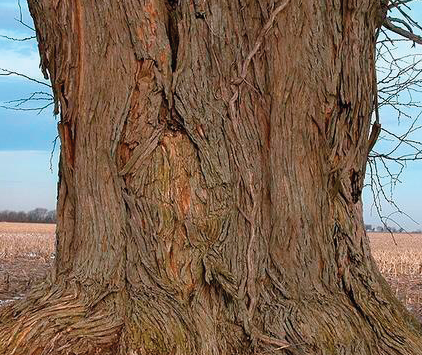The guy that gave it to me referred to simply as hedge?
I may have asked before, but will all the talk about other trees that resemble Osage I thought I'd double check.
this is one of my earlier pieces and one of my favorites.
The guy that gave it to me referred to simply as hedge?
I may have asked before, but will all the talk about other trees that resemble Osage I thought I'd double check.
this is one of my earlier pieces and one of my favorites.
Last edited by Bill Jobe; 07-07-2016 at 12:28 AM. Reason: Poor spelling
Certainly looks like it to me.
By the way, I took it outside for a few hours, using it as sort of a model for a bigger bowl. After about 2 hours I finally got the new piece balanced and turned fully round I looked at this bowl for the first time since taking it outside. It had blushed and became quite a bit darker in color in that short amount of time.
It sure looks like it. It's also known as hedge apple.
Without knowing the size of the piece, I would be inclined to think this is Mulberry, based on the distance between growth rings as shown in the base and the chatoyance around the knot.
Osage orange is called hedge in a lot of places. I have turned a number of pieces, and have some in my shop at present...no doubt in my mind that this is Osage orange.
Remember, in a moments time, everything can change!
Vision - not just seeing what is, but seeing what can be!
You can’t go by this poor picture and say for sure what kind of wood it is.
If you want to know for sure,chuck it up again and turn some wood from under the foot, and save all those shavings,
Then put these shavings in some water and boil that for half an hour, if it is OsageOrange the water will be a yellow dye color.
Have fun and take care
If the guy who gave it to you said it was "hedge" and he cut it from the tree himself and know his trees, then it probably is hedge (osage orange, bodark, hedge apple). Osage is pretty distinctive in density, color, end grain appearance, and the way it feels when worked once you have worked with enough of it and with the other species which are similar.
You can look at photos of boards and turnings all day and never be sure of the wood. There are other far more positive ways to identify wood. One of the best ways is to look at the end grain with a 10x lens after shaving it clean with a razor blade. Look in the online Wood Database at the descriptions of osage and, for example, mulberry and black locust. Note the descriptions, especially things like tyloses in the pores. Compare the latewood appearance.
Osage orange:
image.jpg
To me, osage is distinctively unique but then I haven't seen examples of the common look-a-likes from all over, some of which will certainly be different than what I've personally cut here.
Another way to ID is to send a small scrap to someone who makes a hobby of identifying wood.
Another way for a positive ID is to send a sample to the government forest products laboratory which will identify it at no charge, assuming you are a US citizen.
The most common way is to do like many turners and simply write what you think it is on the bottom. Most of the people won't know any better and most of those that do may get a private chuckle. I still remember the distinctly ring-porous wood bowl labled "cherry" that someone in our club passed around 10 years ago.
JKJ
Even allowing for difference in lighting, the bark in your pic certainly doesn't look like Osage Orange in my part of the world:

Bill you can choose the one that yours looks like most, in the next two pictures, first one is Osage Orange and second one is Mulberry.
Also have a look of the tree picture Malcolm McLeod put up, and you decide if your bark is anywhere near like that
Osage Orange.jpg Mulberry.jpg
Have fun and take care
A few years ago a guy called to see if I wanted some Osage logs. The tree was massive like that one, had been growing in a patio next to a house. He said it was on the registry as the largest Osage Orange in the state of TN. I got some of the log sections after the lowest branching and cut a bunch of turning wood and stakes. Osage is my favorite wood for garden stakes since is dead set against rotting in the ground.
JKJ